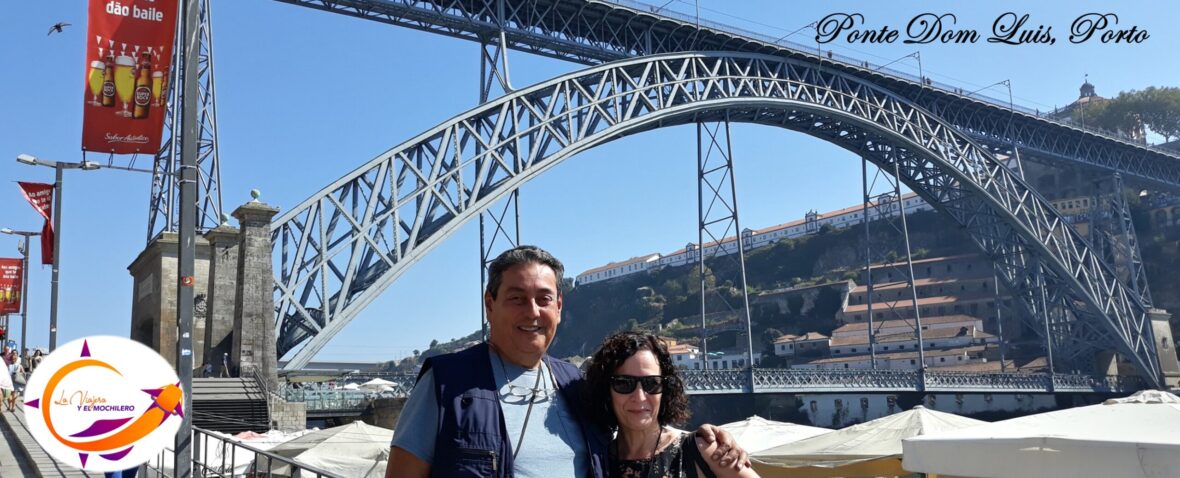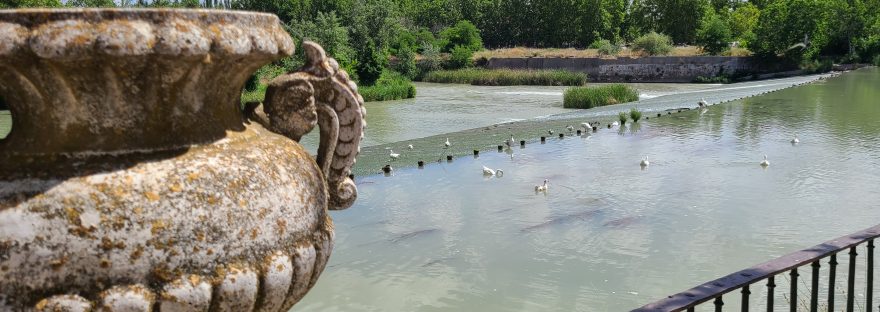The Garden of the Island is located to the north of the Royal Palace of Aranjuez and is considered one of the main works of Spanish Renaissance gardening along with the “Casa de Campo” in Madrid. Since 1931 it has been of Cultural Interest and since 2001 it has been a World Heritage Site as part of the Cultural Landscape of Aranjuez declaration.
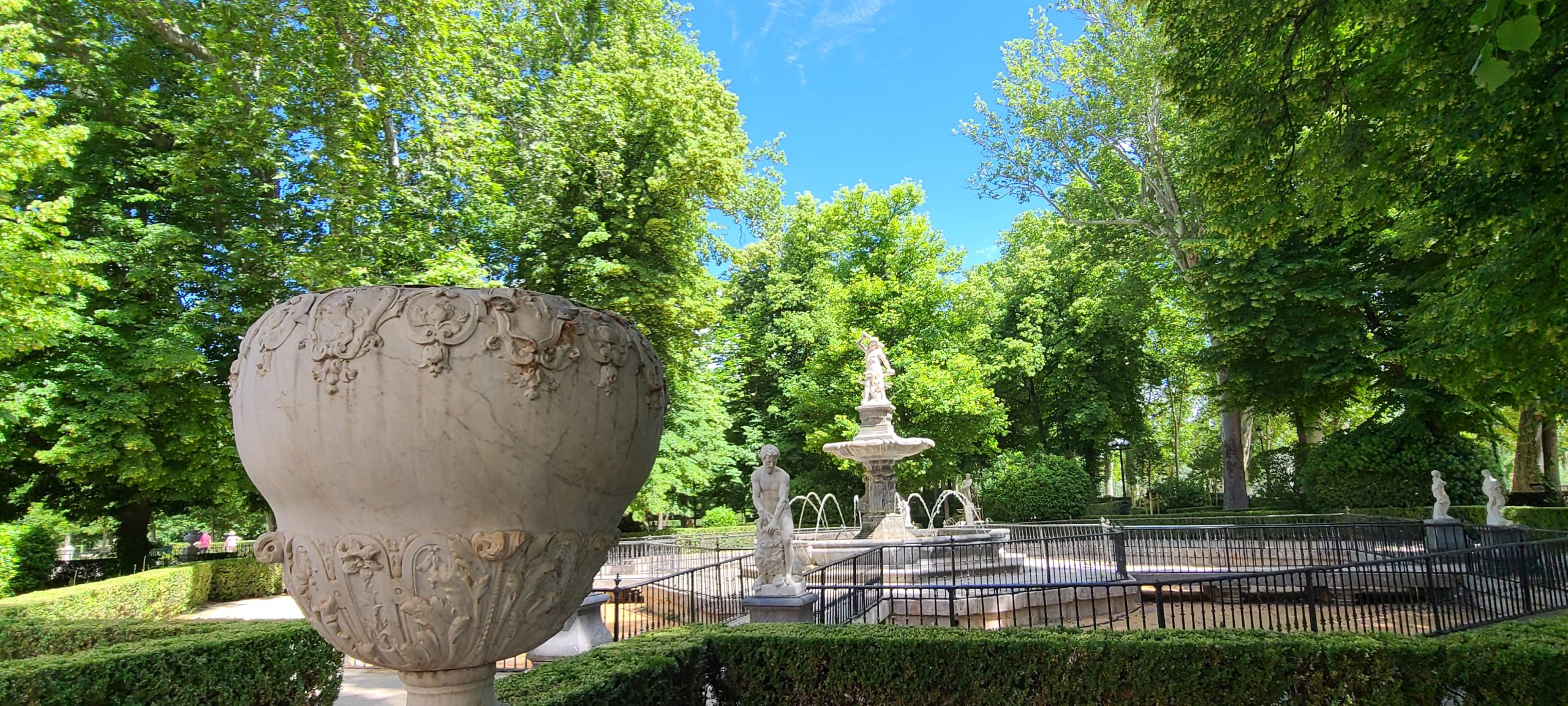
The garden is on an artificial island of approximately 25 hectares of extension, within the Tagus river and an estuary or channel. There are four bridges that provide access to the garden.
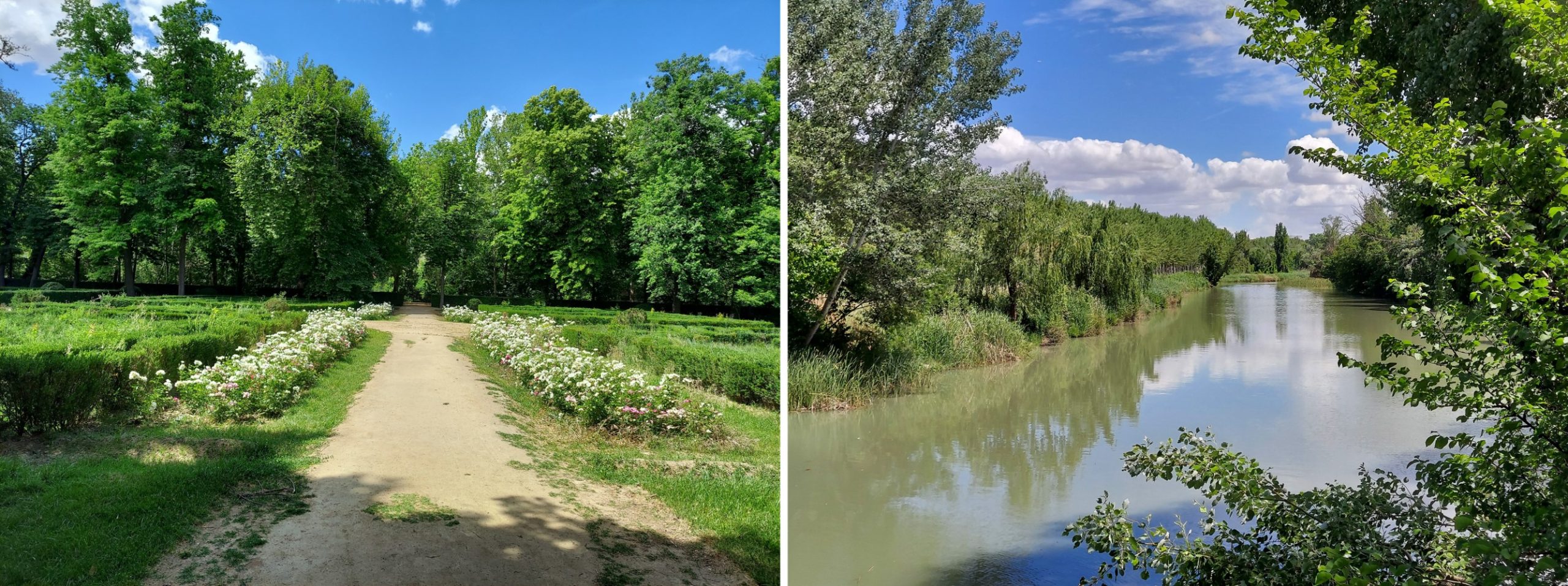
Upon the arrival of the architect Juan Bautista de Toledo in 1560 and the order by the King in 1561 to lay out the garden, this project began, where both Spanish and Italian gardeners worked. Shortly thereafter, species of plants and trees arrived from Flanders and France, and fruit trees from Andalusia and Valencia.
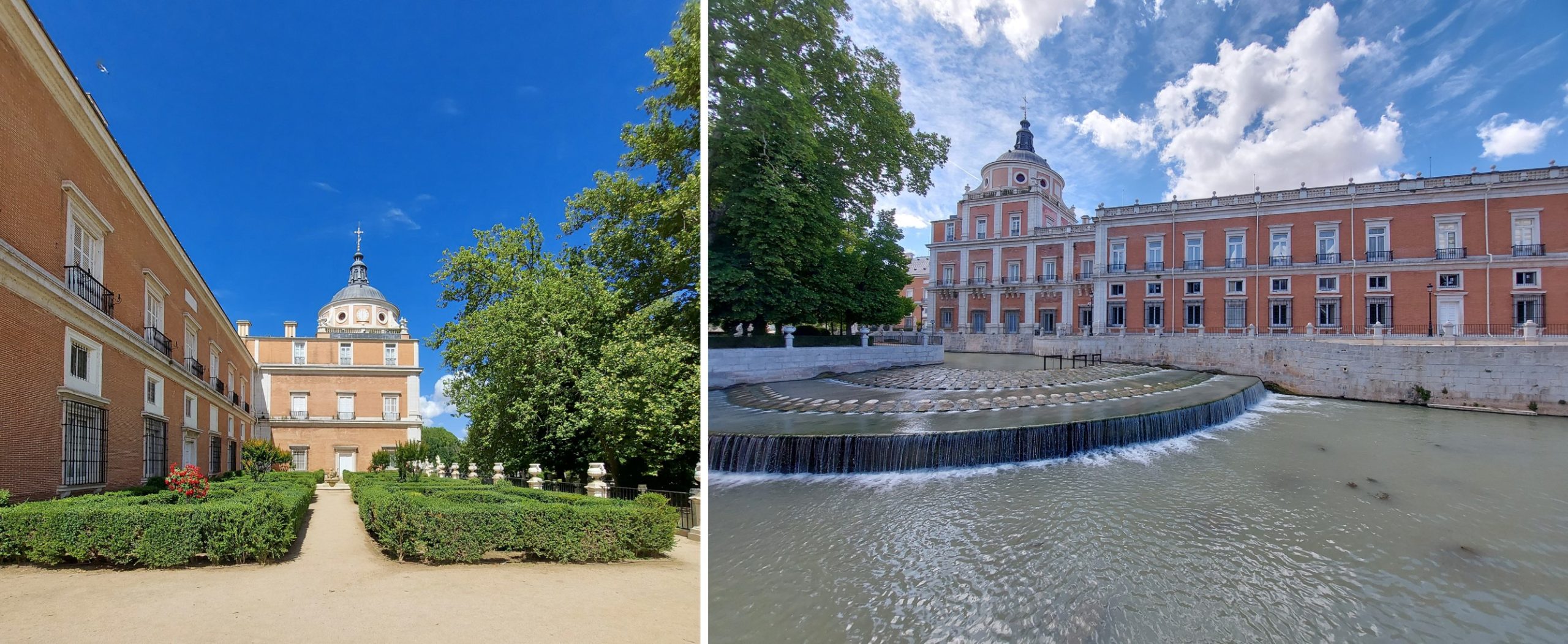
The north façade of the Palace is separated from the Garden of the Island by a paved estuary, which widens in a fan shape forming the Cascade called Castañuelas, a work of Bonavía. This waterfall, next to the Royal Palace, is located in the canals that were created on the Tagus River to retain and direct its waters.
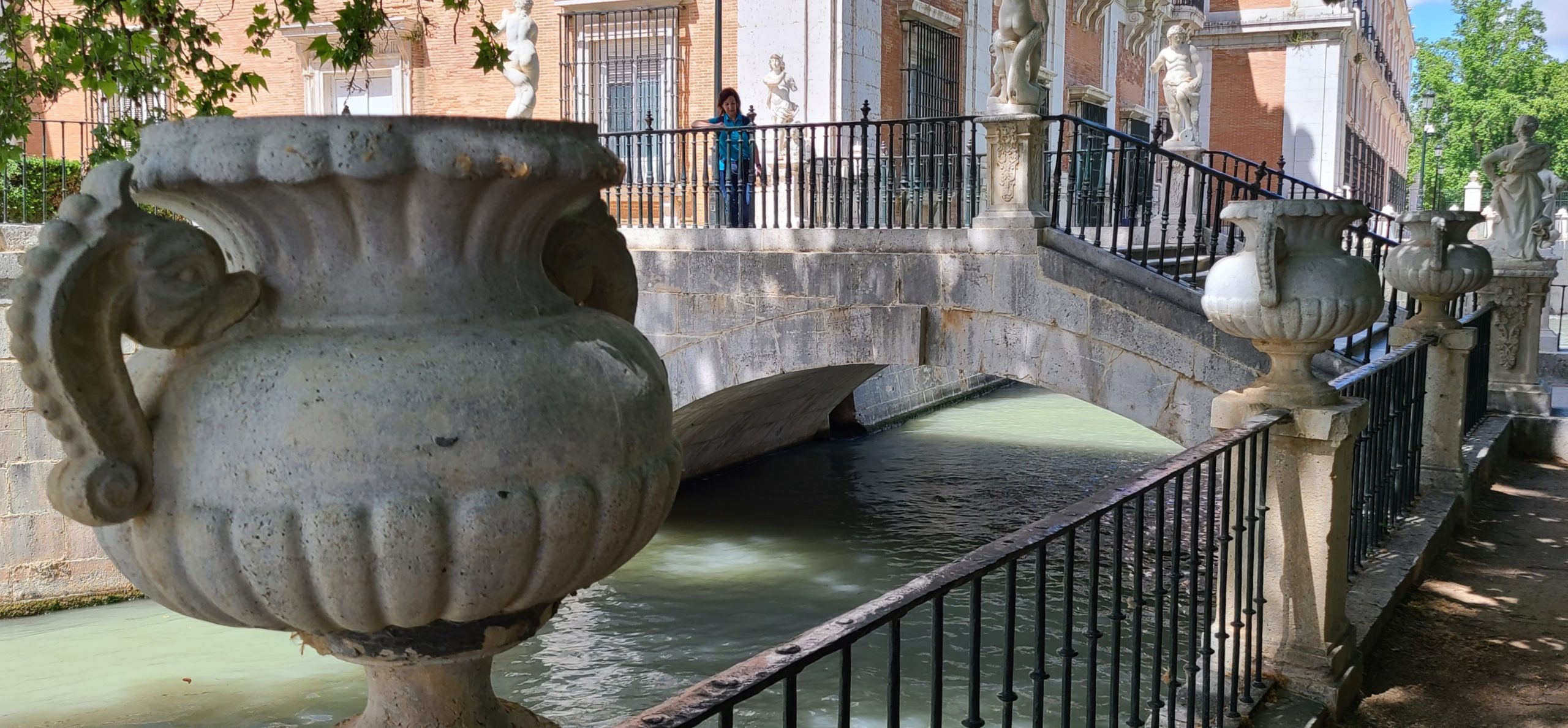
One of the most striking bridges that gains access to the garden is the Escalinata bridge. Here we observe a set of six sculptures, three gods and three goddesses, where the former appear facing the goddesses with whom they formed a couple maintained relations.
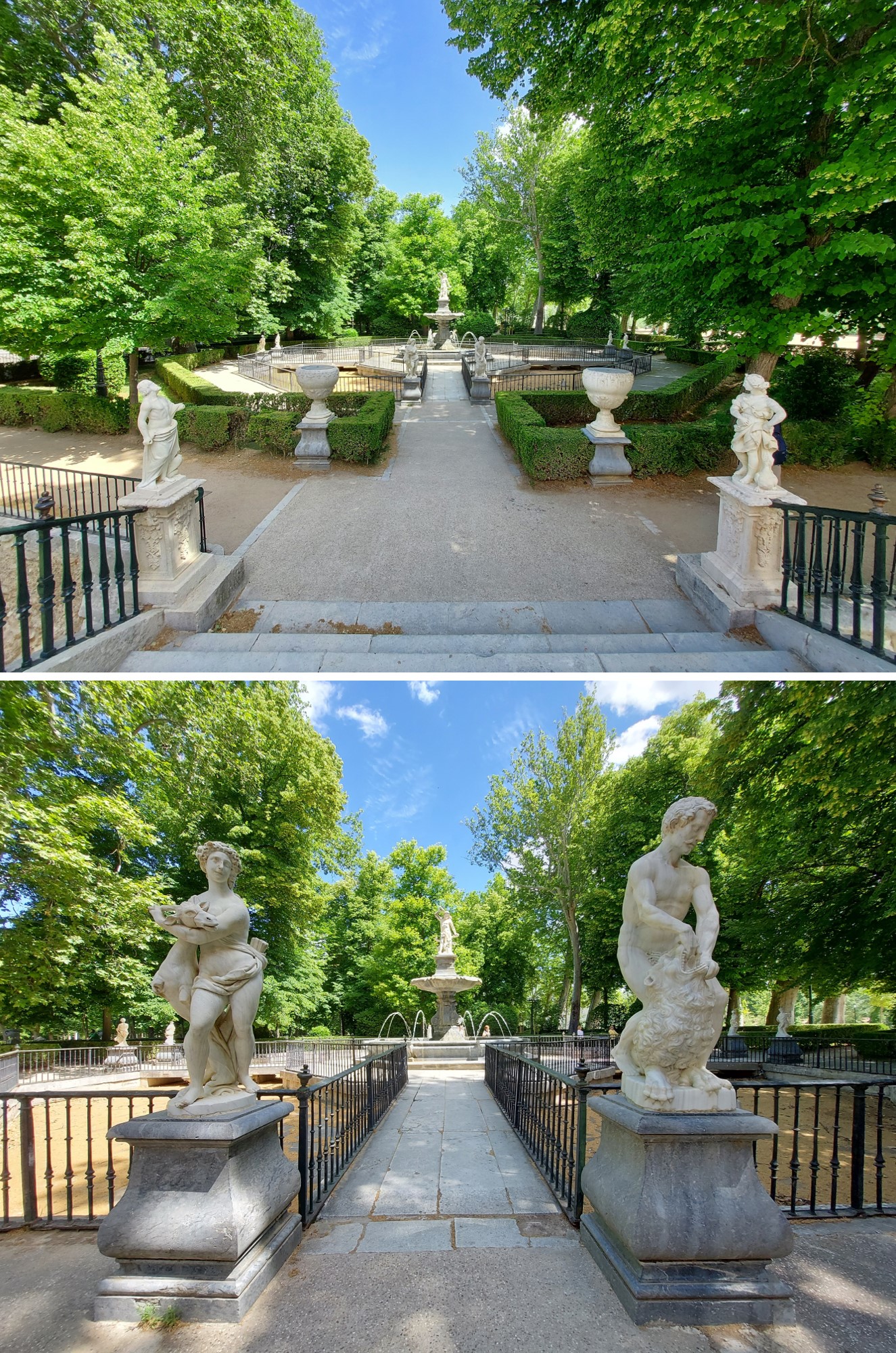
Crossing the bridge of the Escalinata is an octagonal plaza. It has a pond of the same octagonal shape, crossed by four accesses. In its center, on a marble pylon on which a pedestal protrudes, we observe the central sculpture of the whole, Hercules fighting with the Hydra. Each of the four entrances to the center of the complex is guarded by two sculptures.
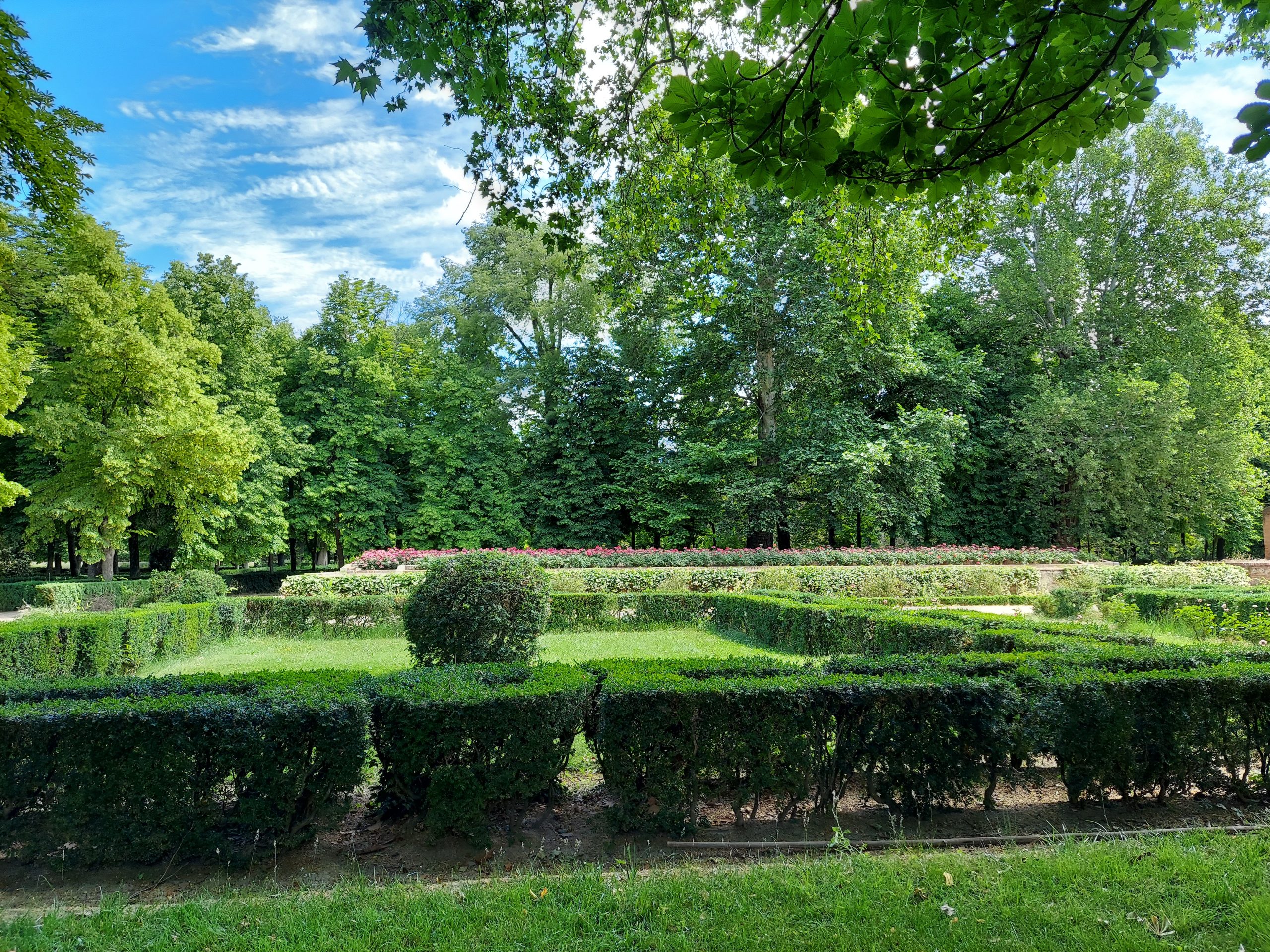
The layout of the Garden of the Island is based on a very marked central axis, surrounded by rectangular compartments that are divided into squares. A garden, without a doubt, very well thought out, organized and structured.
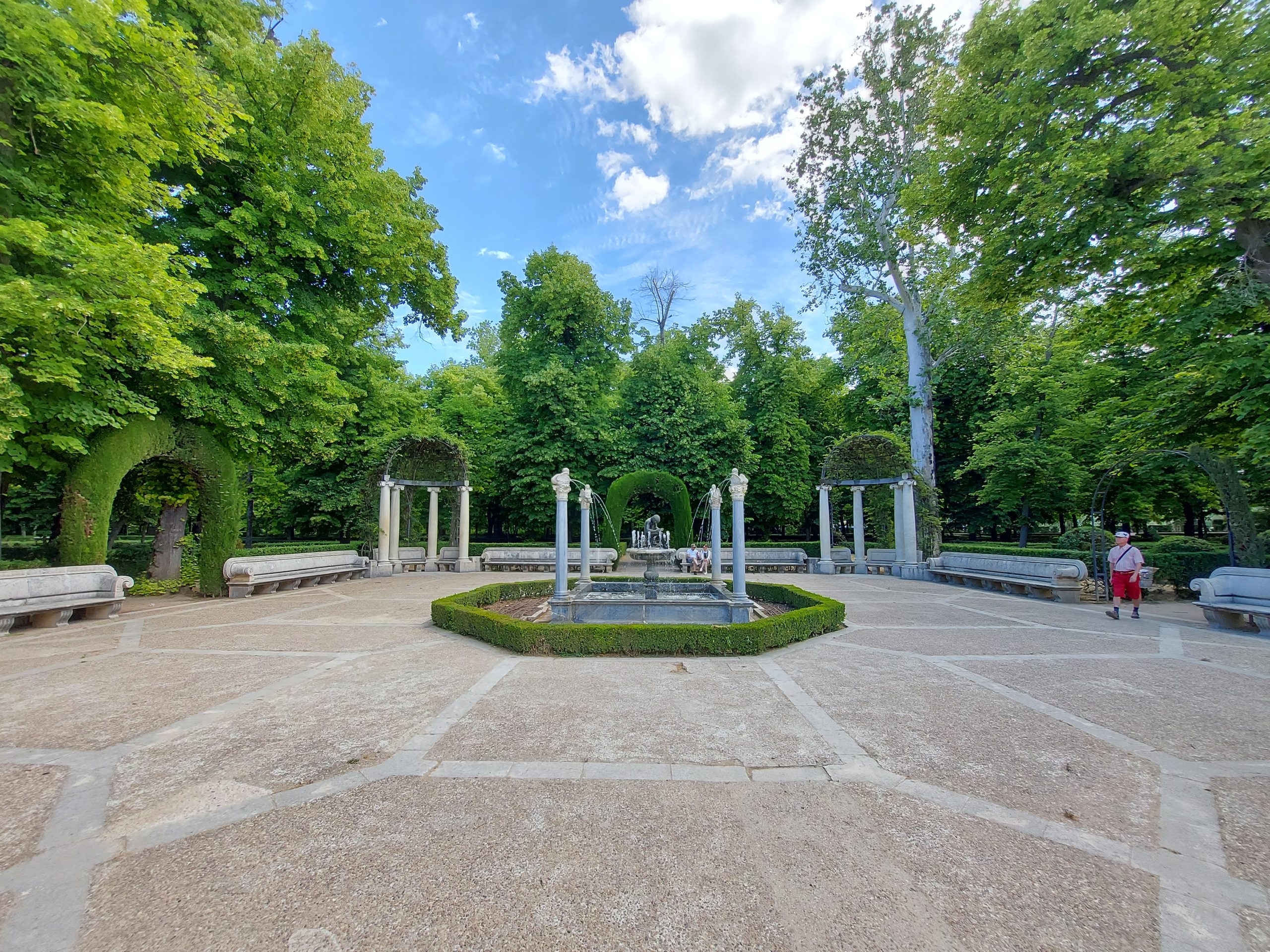
The crossroads of the most important transversal axes with the central axis are marked by small squares with fountains, which, being placed in a straight line, make the distribution of water much more effective. The arrangement of the fountains dates to 1582, but their number and richness were substantially increased during the reigns of the son and grandson of Philip II.
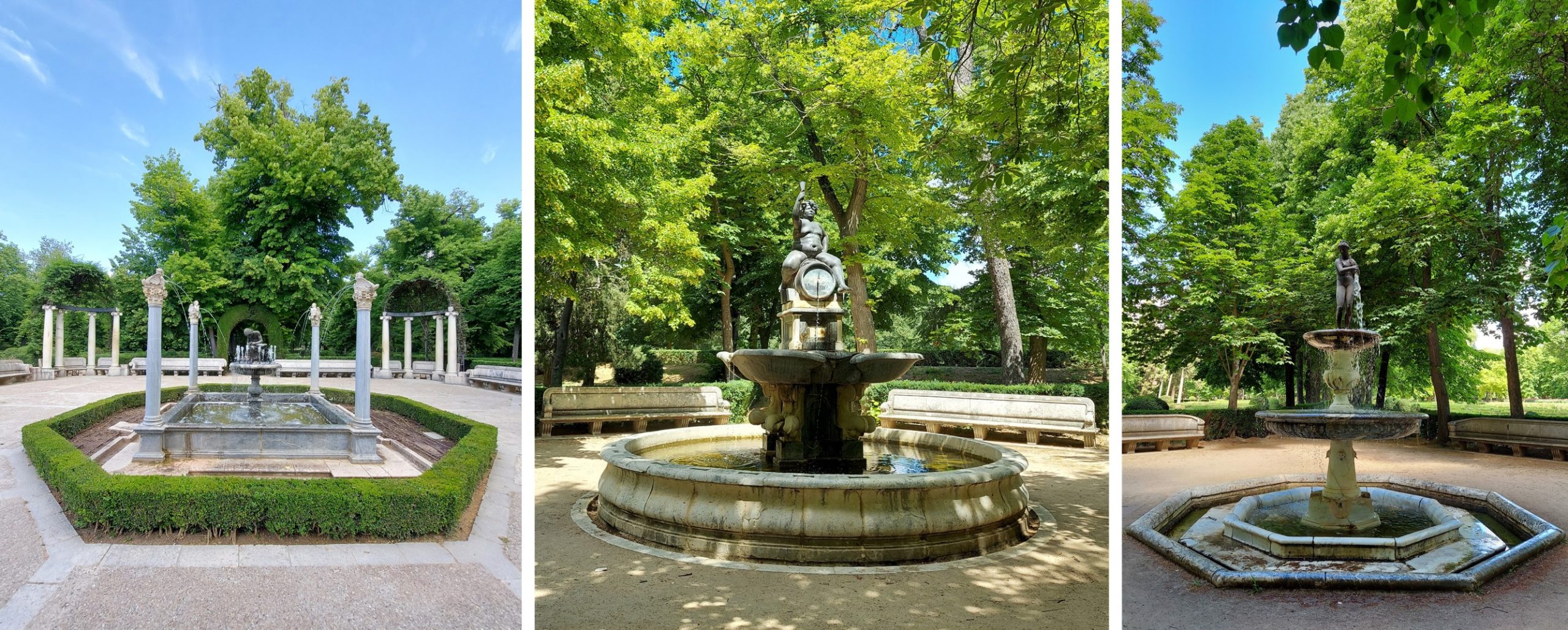
Some small squares with fountains that can be found in the Garden of the Island are: the Fountain of the Child of the Thorn, the Fountain of Venus and the Fountain of the God Bacchus.
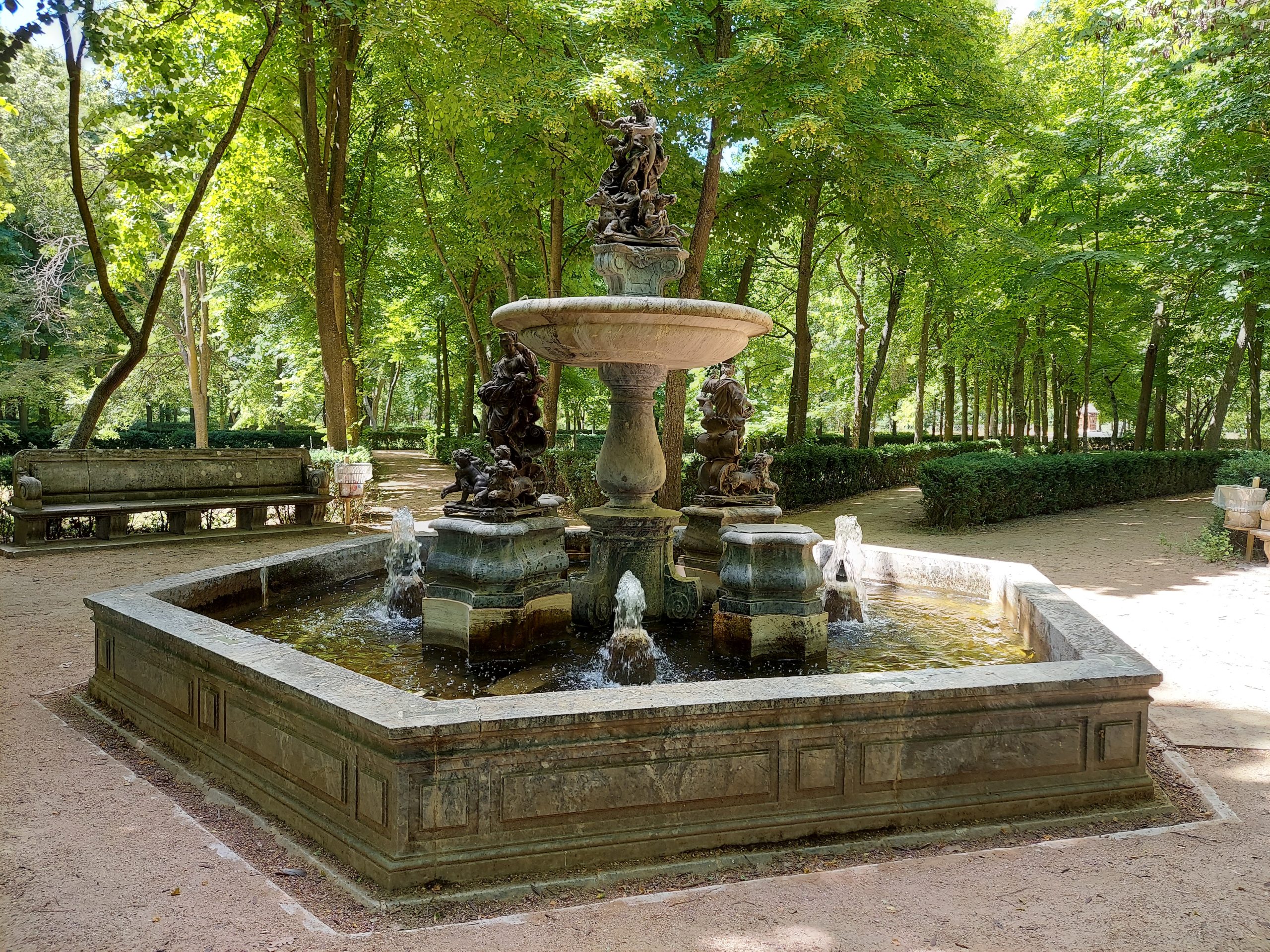
According to the inscription on its pedestal, it was commissioned in 1621 by Philip III. In 1662 it was relocated by Philip IV, replacing the original sculptural group with that of Neptune and adding six more sculptures: Neptune, Ceres or Cybele, all by Alessandro Algardi.
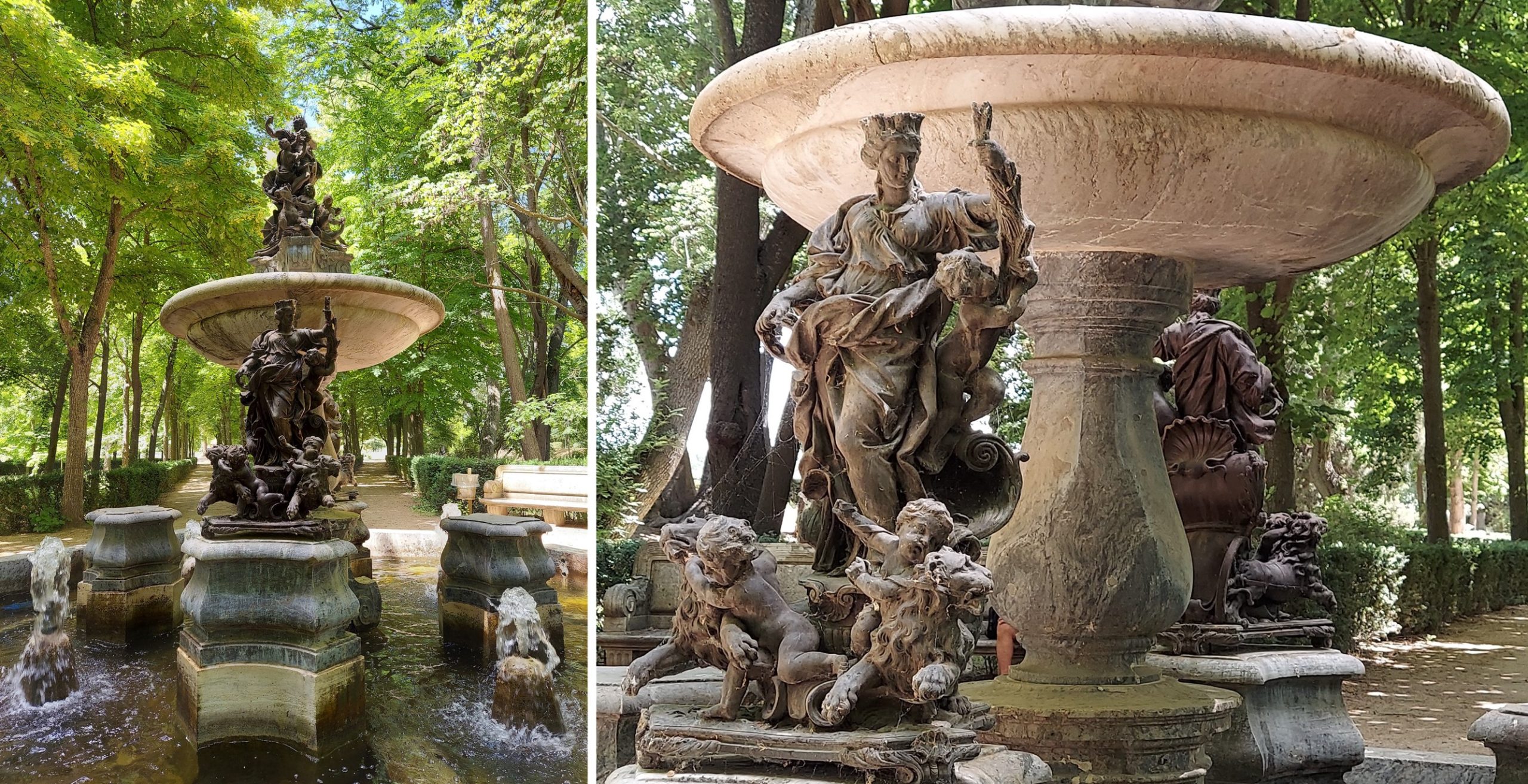
Originally, seven groups of sculptures were placed in the Fountain of Neptune. In the 19th century one of the lower groups with its pedestal was removed, and after the civil war the others disappeared, leaving what we see today.

The Fountain of the Apothecary is found almost at the end of our stroll through the Garden of the Island. It has a circular glass and a sculptural group of figures of children with shells and rocks. In the background, we can see the so-called Hall of the Catholic Monarchs, a walkway of more than 300 meters of trees, located next to the high dam of the Tagus, which is separated by an iron railing with pedestals and vases, as in the moat of the Parterre Garden.
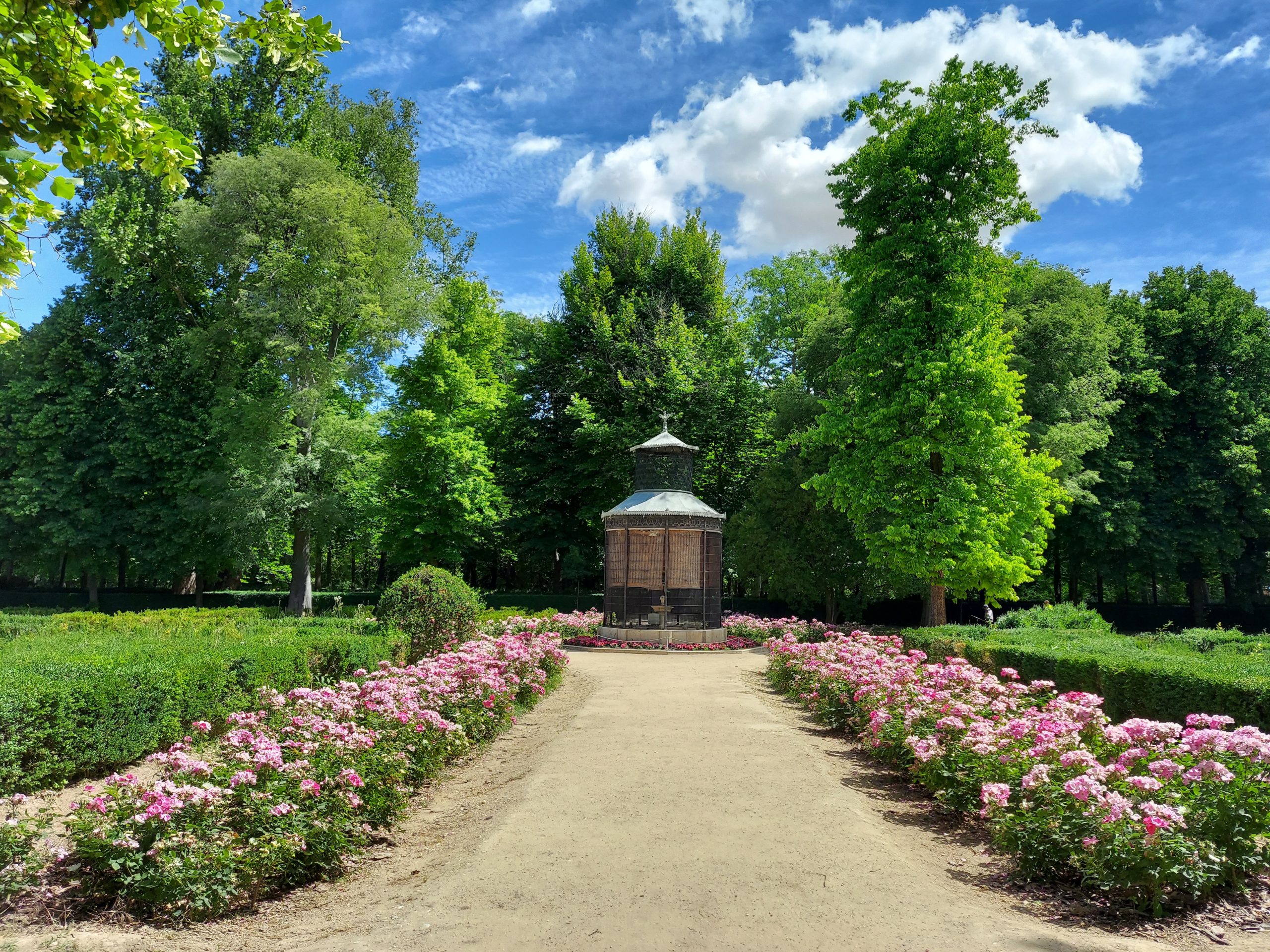
Not only does one find fountains and groves and hedges in these beautiful gardens, but also this construction called the Pajarera. A very large cage, which, yes, has birds inside. We don’t know for sure if the birds are there for a specific reason, but we thought it was nice and cute.
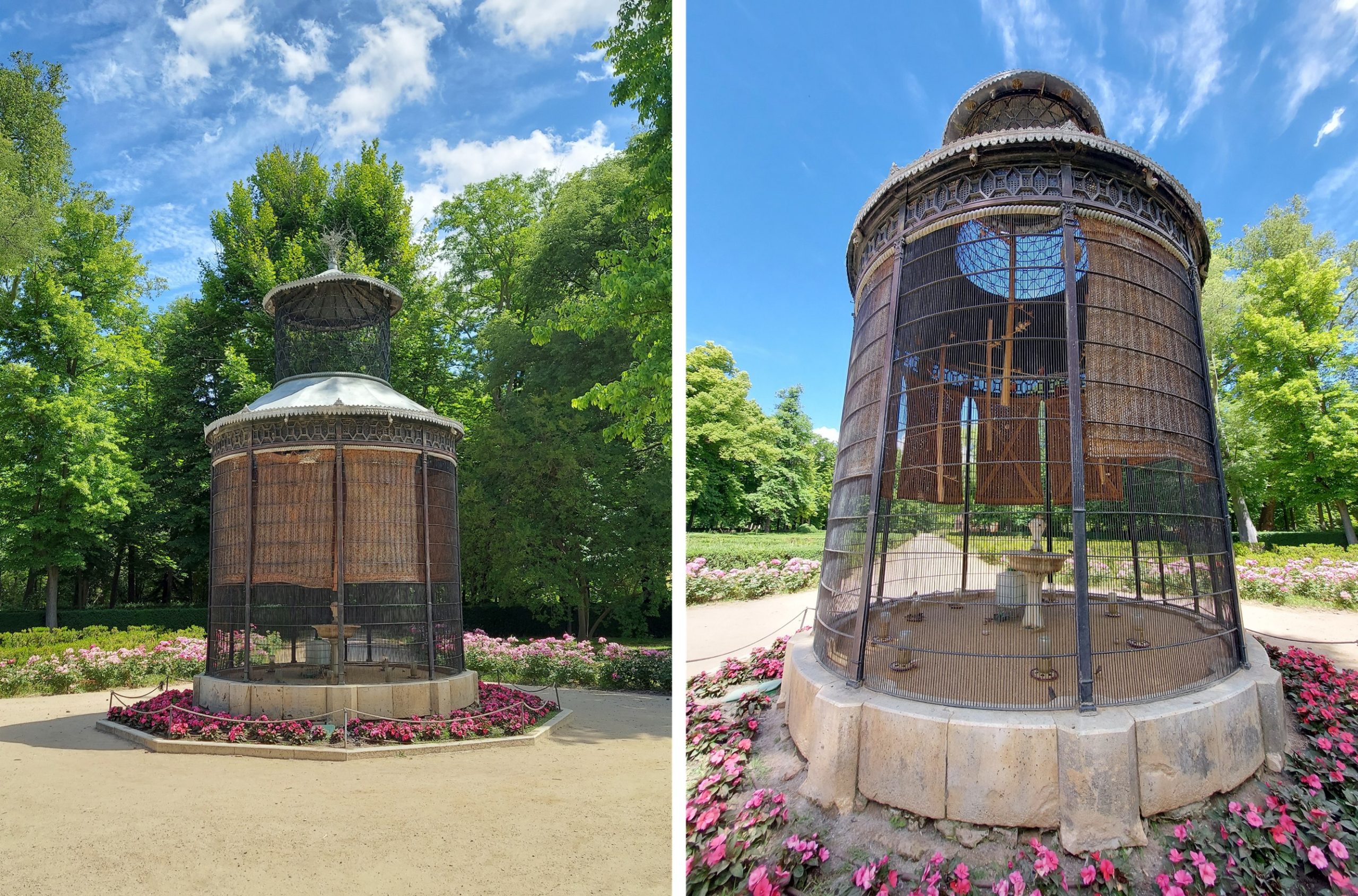
Resources:
https://www.aranjuez.com/jard%C3%ADn-de-la-isla.html
https://es.wikipedia.org/wiki/Jard%C3%ADn_de_la_Isla_(Aranjuez)
